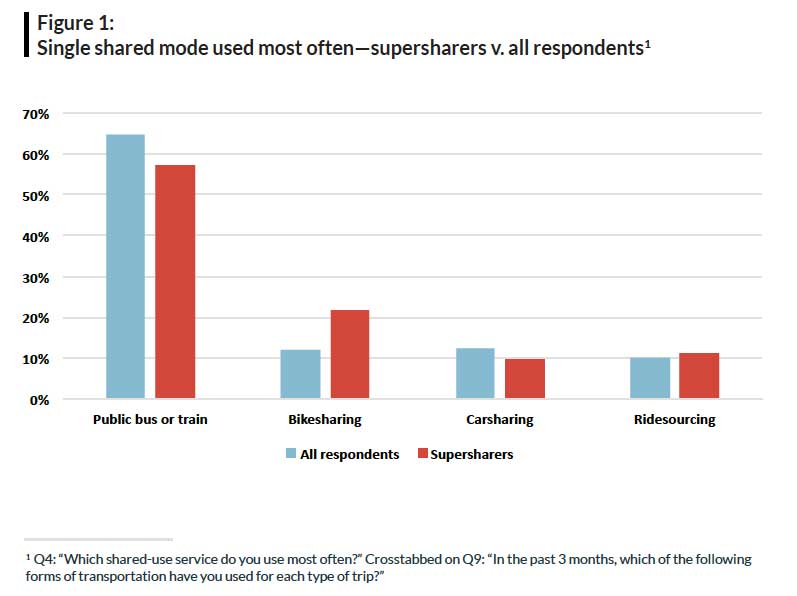Transportation 'Supersharers' Are Also Supersavers These individuals use an ecosystem of buses, trains, Uber, Lyft, bikesharing and Zipcar to get where they need to go.
Opinions expressed by Entrepreneur contributors are their own.

The car culture in America runs deep. But those who have constructed a life that bucks that trend have also found a way to save themselves some serious bucks.
Further, the more varieties of shared transportation Americans use, the more money they save.
This is according to new research by the public-interest advocacy group, Shared-Use Mobility Center, released today on behalf of the national public transit advocacy group, American Public Transportation Association, and paid for with money from the Federal Transit Administration.
Related: Carpooling Startup Tripda Runs Out of Gas, to Shut Down
According to the report, a supersharer is an individual who has reported use of public buses or trains, bikesharing, carsharing with the likes of car2Go or Zipcar and ridesourcing car trips with the likes of Lyft or Uber. A supersharer has reported using a combination of shared mobility transportation for commuting, errands and recreational uses within the past three months.
Even with the explosive growth of the ridesourcing segment of that ecosystem -- think Uber and Lyft -- public transportation, either bus or train, is the most popular mode of shared transportation, by far.

Because they depend on a handful of other transportation innovations, supersharers are less likely to own a car than their peers.

Because they aren't paying to own and maintain a car, supersharers save more money on transportation than their peers.

All that transportation sharing means that supersharers are spending more time on their feet, on a bike or walking to and from a bus or train stop. This supersharer segment of the population reported that they were more physically active than their peers.

For the research, 4,500 Americans who use some sort of shared transportation responded to the survey across seven cities, including Austin, Boston, Chicago, Los Angeles,San Francisco, Seattle and Washington D.C.
Related: This New App Lets You Summon Your Grandma (or Tinder Date) Via a Prepaid Uber Ride










